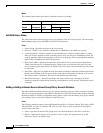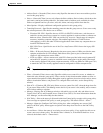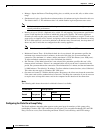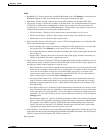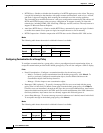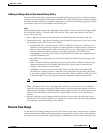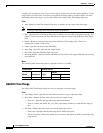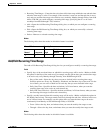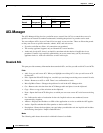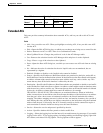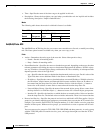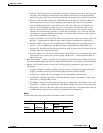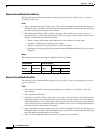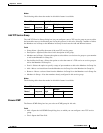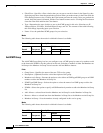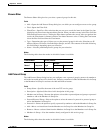
35-14
Cisco ASDM User Guide
OL-16647-01
Chapter 35 General
ACL Manager
ACL Manager
The ACL Manager dialog box lets you define access control lists (ACLs) to control the access of a
specific host or network to another host/network, including the protocol or port that can be used.
You can configure ACLs (Access Control Lists) to apply to user sessions. These are filters that permit
or deny user access to specific networks, subnets, hosts, and web servers.
• If you do not define any filters, all connections are permitted.
• The security appliance supports only an inbound ACL on an interface.
• At the end of each ACL, there is an implicit, unwritten rule that denies all traffic that is not
permitted. If traffic is not explicitly permitted by an access control entry (ACE), the security
appliance denies it. ACEs are referred to as rules in this topic.
Standard ACL
This pane provides summary information about standard ACLs, and lets you add or edit ACLs and ACEs.
Fields
• Add—Lets you add a new ACL. When you highlight an existing ACL, it lets you add a new ACE
for that ACL.
• Edit—Opens the Edit ACE dialog box, on which you can change an existing access control list rule.
• Delete—Removes an ACL or ACE. There is no confirmation or undo.
• Move Up/Move Down—Changes the position of a rule in the ACL Manager table.
• Cut—Removes the selection from the ACL Manager table and places it on the clipboard.
• Copy—Places a copy of the selection on the clipboard.
• Paste—Opens the Paste ACE dialog box, on which you can create a new ACL rule from an existing
rule.
• No—Indicates the order of evaluation for the rule. Implicit rules are not numbered, but are
represented by a hyphen.
• Address—Displays the IP address or URL of the application or service to which the ACE applies.
• Action—Specifies whether this filter permits or denies traffic flow.
• Description—Shows the description you typed when you added the rule. An implicit rule includes
the following description: “Implicit outbound rule.”
Modes
The following table shows the modes in which this feature is available:
Firewall Mode Security Context
Routed Transparent Single
Multiple
Context System
• • • •—



